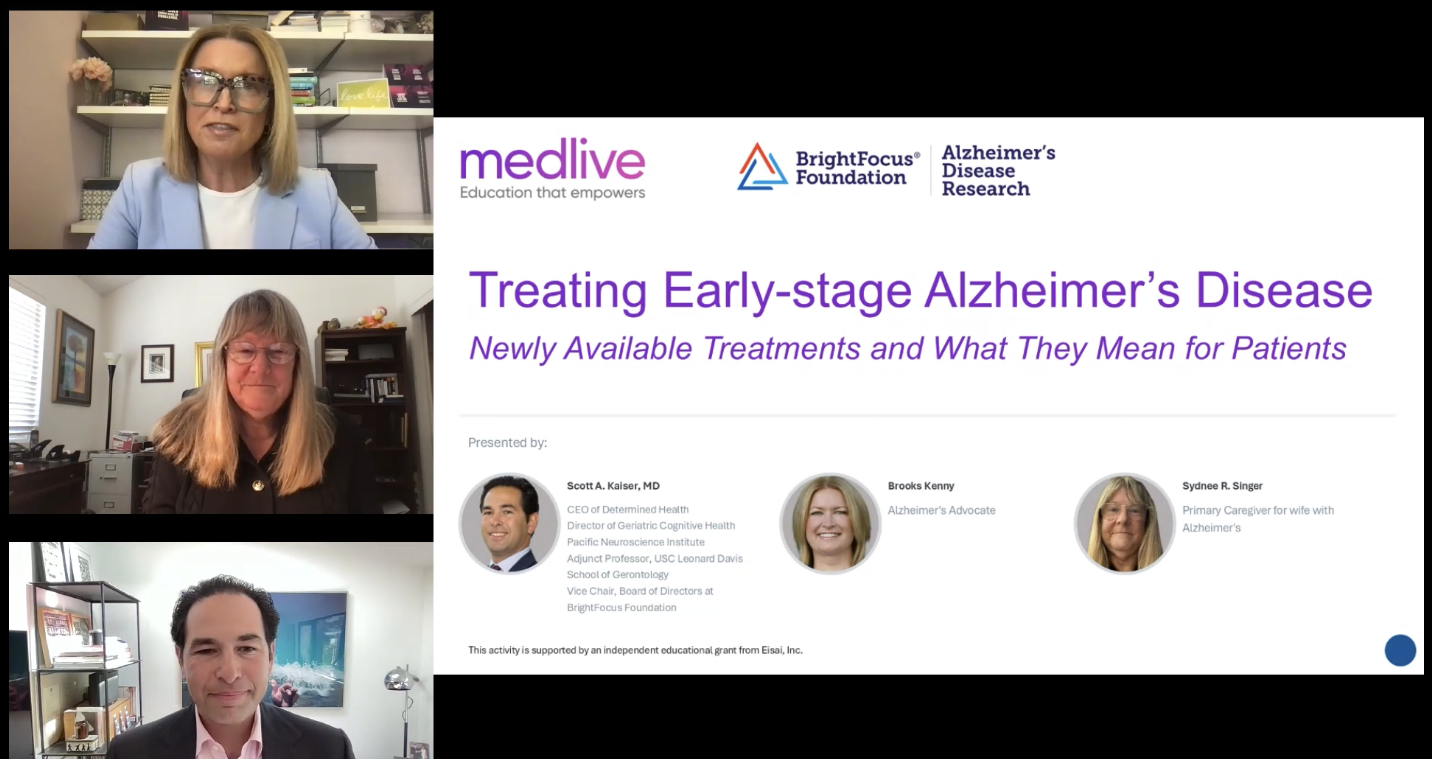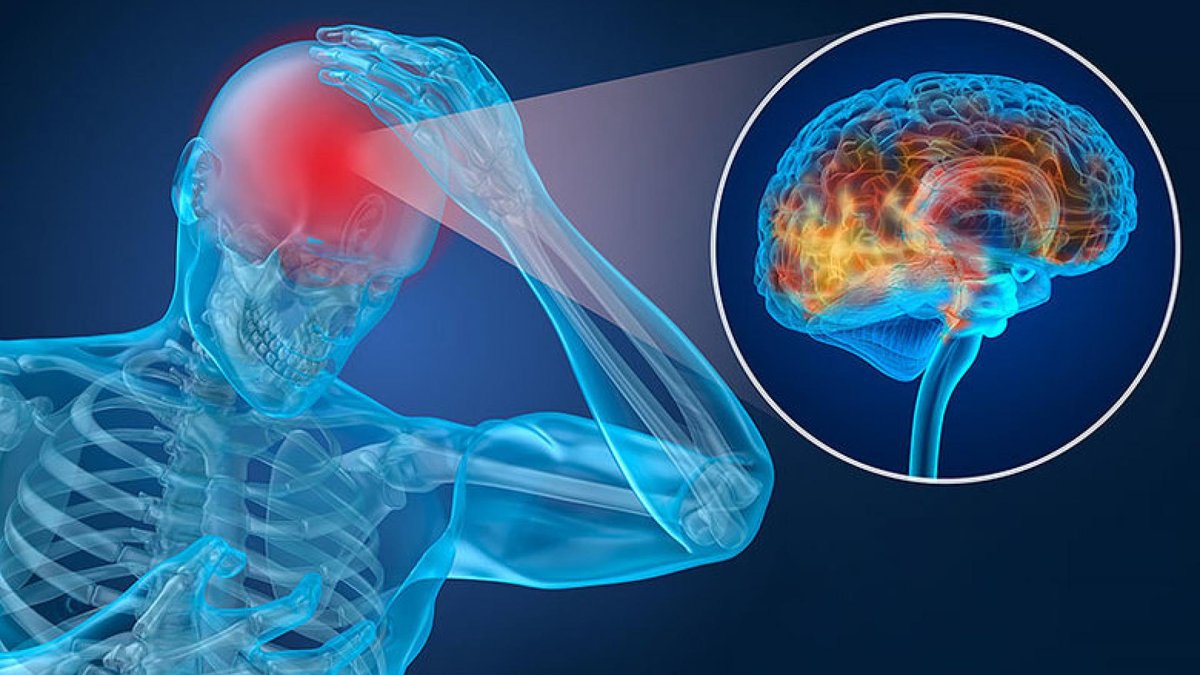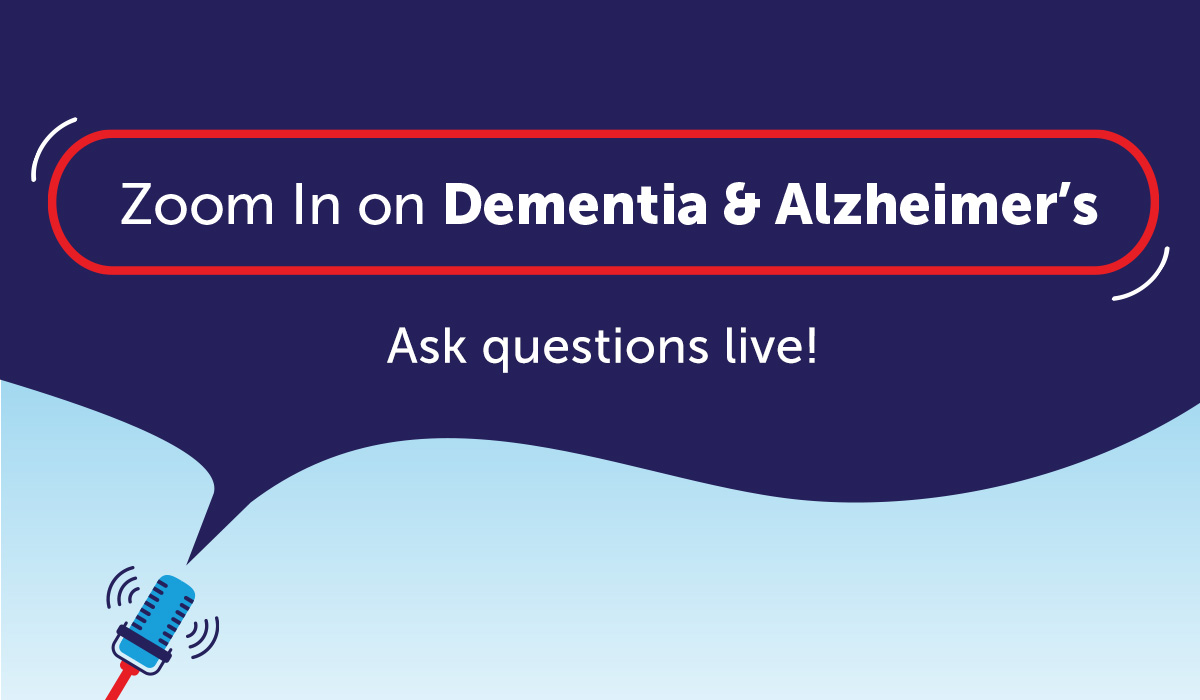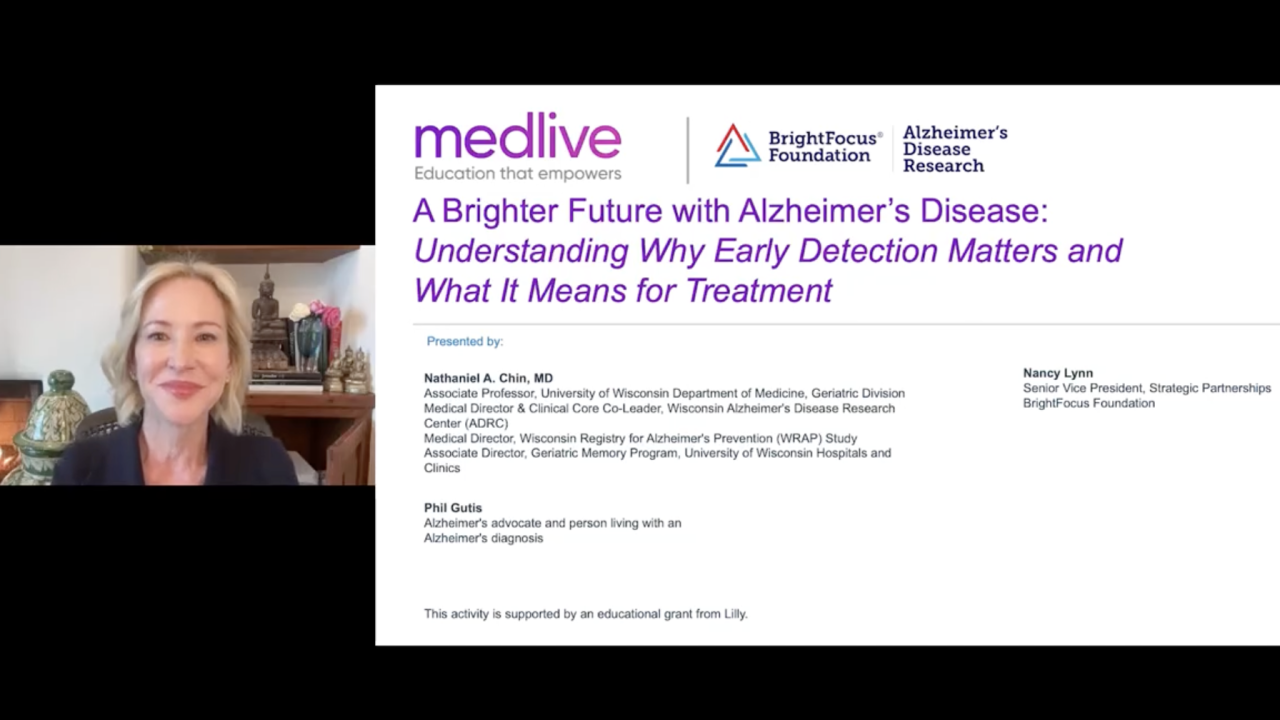The Challenging Behaviors of Alzheimer’s Disease: Other Treatment Options (Part Three)
This final installment of a three-part series explores some of the non-antipsychotic treatment options to help manage the challenging behaviors of Alzheimer’s disease. Some of these involve medications, while others are psychosocial interventions.
In part one of this three-part discussion of challenging behavioral symptoms in dementia (also called major neurocognitive disorder), we explored the range of non-cognitive behavioral disturbances that complicate the care of a person with dementia. In part two, we looked in depth at the controversy surrounding the use of antipsychotic medications in the treatment of these behaviors. In this final installment of the series, we will look at some of the non-antipsychotic treatment approaches. Some of these involve medications or electroconvulsive therapy, while others are psychosocial. We will also describe a newly publicized approach to the management of challenging behaviors.
FDA Approved Drugs
The Food and Drug Administration (FDA) has given two classes of medication approval (“indication”) for the treatment of Alzheimer’s disease. The cholinesterase inhibitor class has multiple members: tacrine (Cognex) is no longer in use, while donepezil (Aricept), rivastigmine (Exelon), and galantamine (Razadyne) are used widely. The other class of medications, antagonists of the NMDA glutamate receptor, contains only one member: memantine (Namenda). Although the medications from these two groups have different mechanisms of action and different side effects, they share important clinical features.
All of these medications are considered to be symptomatic treatments rather than significantly disease-modifying agents. Each has been shown to improve cognition modestly and to have mild beneficial effects on activities of daily living and caregiver burden. Neither the cholinesterase inhibitors nor memantine, however, has been shown convincingly to have beneficial effects on established challenging behaviors such as agitation, insomnia, or wandering.
Off-Label Treatments
Anticonvulsants
Anticonvulsants, another class of medications with both powerful effects and significant potential adverse effects, have been used off-label in the treatment of challenging dementia behaviors. The data for their efficacy is most complete for divalproex (Depakote), which is the more frequently used of these medications for this purpose. Unfortunately, the use of divalproex as a treatment for challenging behaviors, though sometimes effective, is not well-supported by the accumulated evidence. Another anticonvulsant, carbamazepine (Tegretol), has a very limited but more consistently positive evidence base. Perhaps it should be used more frequently, but its adverse effects and interactions with other drugs have rendered it less popular. Lamotrigine (Lamictal), gabapentin (Neurontin), topiramate (Topamax), and oxcarbazepine (Trileptal) have all been tried and supported by small case studies or anecdotal successes, but support for their use is very limited.
Antianxiety Medications
Medications, called benzodiazepines, such as lorazepam (Ativan), alprazolam (Xanax), oxazepam (Serax), or clonazepam (Klonopin) are sometimes prescribed off-label in the effort to reduce agitation in people with dementia. A handful of studies in which these medications have been compared to antipsychotics such as thioridazine (Mellaril, no longer available) or haloperidol (Haldol) found similar efficacy, but the efficacy of both classes is limited. Furthermore, the adverse effects of benzodiazepines in older adults with cognitive impairment can be quite problematic: gait instability, increased falls, unwanted sedation, and confusion.
In a small number of people with dementia who require medication treatment and are intolerant of other options, benzodiazepines may play a reasonable role, but their use should be minimal. The dosage and duration of treatment should be restricted to what is required, and there should be attentive monitoring of efficacy and adverse effects.
Antidepressants
In contrast to these other medication classes, there is considerable interest in the potential benefits of treatment for challenging behaviors with off-label use of some members of the antidepressant class. Citalopram, according to an FDA warning, is not intended for use above 20 mg/d (milligrams per day) in elderly patients as a result of evidence of cardiac conduction problems associated with higher doses. Cardiac conduction refers to special cells in the heart that send signals to the heart muscle, causing it to contract.
Escitalopram (Lexapro), which is a chemical relative of citalopram, appears to have a milder but still potentially significant risk for cardiac conduction issues. Other members of the SSRI (selective serotonin reuptake inhibitor) antidepressant class such as sertraline (Zoloft) have not been shown to impact cardiac conduction to the same degree and would be preferred in a patient at risk for conduction-related arrhythmias (heart rhythm abnormalities).
Treatment Options for Extreme Cases
In some cases, dementia-related behaviors create danger for the patient and caregiver that must be controlled in order to achieve safety, even if this requires off-label use of a medication with potentially severe adverse effects. Although less fully studied, some disruptive behaviors in people with dementia have been controlled through the use of adrenergic blockers, e.g., prazosin (Minipress); synthetic tetrahydrocannabinol (dronabinol [Marinol]), and testosterone blockers such as cyproterone (Androcur).
Pain relievers, including opiates, have also been explored in this role. Increasing public concern about opiate misuse, however, would be a relative contraindication for the use of one of these stronger pain relievers. The safe and appropriate use of these more extreme agents, as well as that of electroconvulsive therapy (ECT), are mentioned here but will not be reviewed in any depth, though appropriate research data have supported each approach.
Non-Medication Alternatives
As indicated in the earlier sections of this series, medications are by no means the only way to address challenging behaviors in dementia. In fact, patients, caregivers, clinicians, and advocacy organizations have all expressed concern about the overuse of psychotropic drugs in nursing homes. The Center for Medicare and Medicaid Services (CMS) reported data in 2011 indicating that 83% of claims for antipsychotic medications given to elderly nursing home residents were associated with off-label use, meaning prescribed for an unapproved indication, age group, dosage, or form of administration.
Behavioral Interventions
Behavioral interventions have been used as well as medications, but in some studies, they lack the potentially harmful adverse effects of medications. Among the non-medication behavioral interventions available to caregivers in institutional and home settings, some of the most effective techniques are distraction, redirection, massage, music therapy, physical activity, aromatherapy, and simulated presence therapy. Behavioral interventions are more resource-intensive. They require time and training but avoid some dangers associated with medications.
Innovative new programs such as the Eden Alternative have espoused an approach to dementia treatment described as drug-free and person-centered. In Vermont, a treatment approach named the Oasis Program was developed with the goal of transforming dementia care in nursing homes and reducing inappropriate antipsychotic medication usage by focusing on prevention rather than intervention for behavioral issues.
The “DICE” Model
Pulling both physical and psychosocial approaches together into a cleverly organized mnemonic, Dr. Helen Kales and her colleagues (JAGS 2014;61:762-9) have described the “DICE” model for intervention with challenging behaviors in people with dementia.
- “D” reminds us to “describe” a disruptive behavior. What is it? When does it occur and with whom? What is the patient perspective on the behavior? How much distress does it cause patient and caregiver?
- “I” reminds us to “investigate” the causes of the behavior. Is it an indicator of unrecognized pain, frustration, fear, or boredom? Does it represent medication side effects or an undiscovered medical or psychiatric condition? Is it the result of sensory changes and functional limitations? Does it represent an inappropriate caregiver expectation or a cultural issue?
- “C” reminds us to “create” an intervention that addresses the behavior directly. This may include diagnosing and treating pain-inducing physical conditions such as constipation, using a behavioral analysis to craft a behavioral treatment plan, supporting the caregivers, simplifying tasks, finding meaningful activities, or increasing/decreasing stimulation in the environment. Individualized music therapy, for example, can take into account a person’s musical preference and provides soothing music through headphones and an MP3 player. When appropriate, the created intervention may include use of an appropriately chosen and monitored medication.
- Finally, the very important “E” reminds us to “evaluate” the effect of the intervention, noting whether it has helped and also whether there have also been unintended consequences or side effects of the intervention.
Summary
Management of challenging behaviors in persons with dementia represents one of the most important objectives of dementia care. For patients and caregivers, these behaviors are the most difficult aspect of care. With better prevention and control, people with dementia will be able to remain in less restrictive treatment settings, impose less burden on their caregivers, and sustain a higher quality of life for a longer time.
About BrightFocus Foundation
BrightFocus Foundation is a premier global nonprofit funder of research to defeat Alzheimer’s, macular degeneration, and glaucoma. Through its flagship research programs — Alzheimer’s Disease Research, Macular Degeneration Research, and National Glaucoma Research— the Foundation has awarded nearly $300 million in groundbreaking research funding over the past 51 years and shares the latest research findings, expert information, and resources to empower the millions impacted by these devastating diseases. Learn more at brightfocus.org.
Disclaimer: The information provided here is a public service of BrightFocus Foundation and is not intended to constitute medical advice. Please consult your physician for personalized medical, dietary, and/or exercise advice. Any medications or supplements should only be taken under medical supervision. BrightFocus Foundation does not endorse any medical products or therapies.
- Medications
- Treatments










